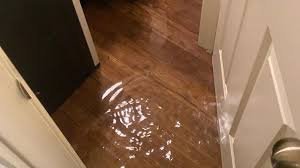Custom home builders - 7 ways to improve your defect management process
Are you a custom home builder who is already under the pump?
How are you managing defects on your projects? Most builders we talk to suggest that their client sends them an email or give them a call when a defect is noticed.
The problem with this method is that you could be going through the checkout at Bunnings or at the beach with your family when you get that call about a leak from the kitchen sink or a cracked cornice in the living room.
Another problem is that you have multiple jobs and sometimes multiple staff running these jobs for you. How can you keep track of the progress of defect management when these defects are notified by the client and communications about these defects might be located on your team’s email account or text messages on their phone?
The only way for you to know what’s going on is to get an update is to ask each of them individually how it's going. Usually the first time you hear about defects on a project is when the customer is complaining because the defects were notified months ago and have not been attended to!
This negative experience for the client can damage your reputation and the trust you have earned with the client. Now you have to drop everything and go and visit this client and sort out all these issues. You can say goodbye to two hours of your time and any referrals and positive online reviews once you have let them down on customer service.
Here is what you can do.
1. Establish clear expectations: Educate your clients about the defect period, their responsibilities, and what constitutes a defect. Set realistic timelines for addressing issues and communicate them clearly.
2. Provide direct contacts: For urgent matters, provide your clients with the contact details of relevant tradespeople, such as plumbers or electricians, so they can take immediate action if necessary.
3. Centralize defect reporting: Set up a system where clients can report defects in one centralized location. This could be through an online portal, email, or call one of your team. This helps ensure all defect reports are documented and easily accessible.
4. Implement a defect tracking system: Utilize software or tools specifically designed for defect management. These systems can help you track the status of each defect, assign responsibilities to your team or tradespeople, and provide visibility into the progress of defect resolution.
5. Regularly review and prioritize: Allocate time each week to review defect reports and prioritize them based on urgency. This allows you to take proactive steps in addressing defects and ensures nothing slips through the cracks.
6. Delegate and communicate: If you have a team or multiple staff members working on different projects, delegate responsibility for defect resolution to specific individuals. Maintain clear communication channels to keep track of progress and updates.
7. Schedule regular follow-ups: Implement a system for following up on defects to ensure they are being addressed within the agreed-upon timelines. This can be automated through reminders or weekly reports.
Remember, it's crucial to prioritize customer service and promptly address defects to maintain a positive reputation and client satisfaction.
If you would like to chat with our team to learn more about improving your defect management or see a demo of how inndox handles all of these issues then get in touch here

